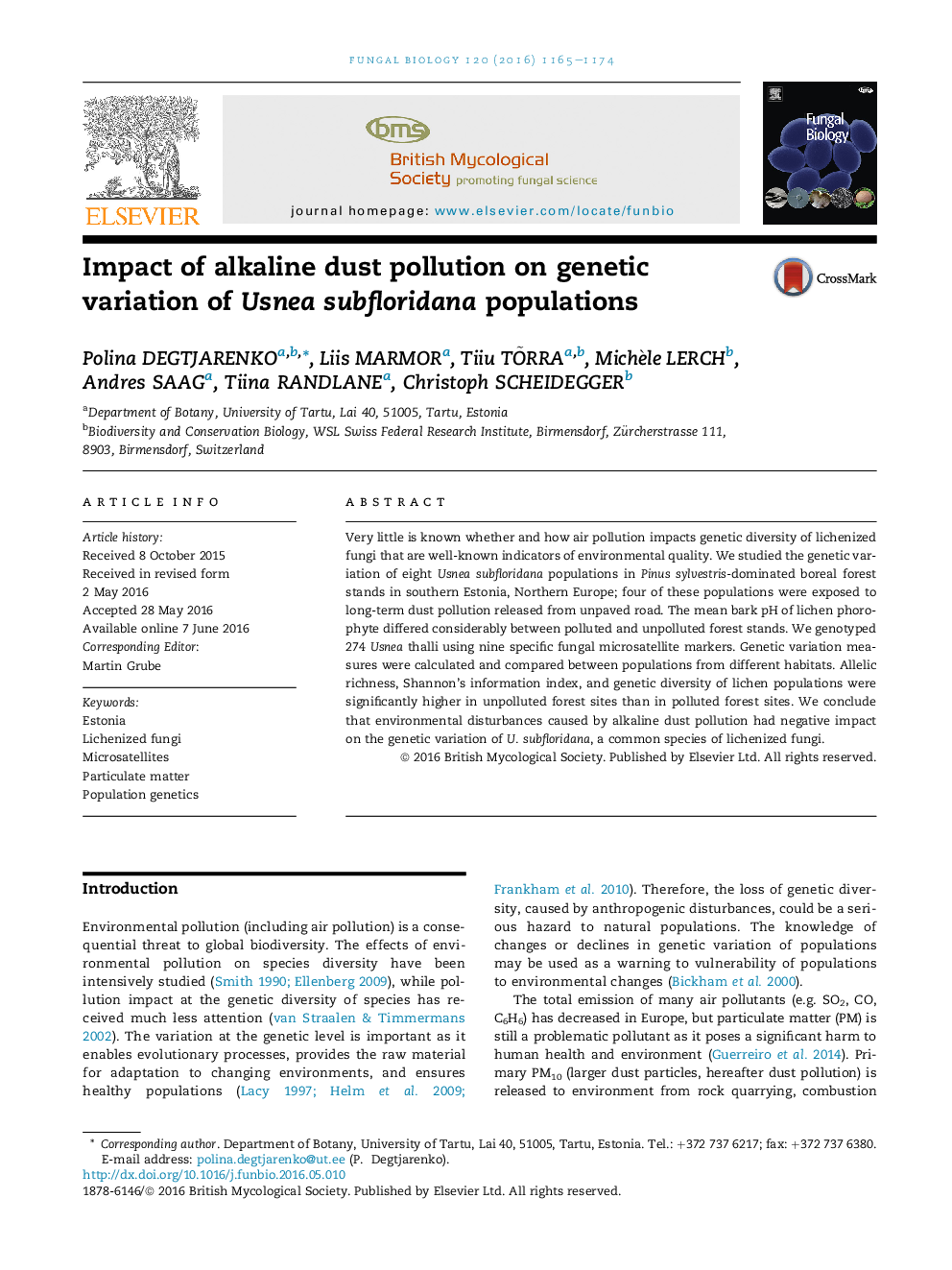| Article ID | Journal | Published Year | Pages | File Type |
|---|---|---|---|---|
| 4356730 | Fungal Biology | 2016 | 10 Pages |
•Genetic diversity of Usnea subfloridana was analysed using microsatellite markers.•Reverse primers for nine microsatellite loci of Usnea subfloridana were rectified.•Dust pollution had negative impact on genetic variation of Usnea subfloridana.•Allelic richness of populations was lower in polluted than in unpolluted sites.
Very little is known whether and how air pollution impacts genetic diversity of lichenized fungi that are well-known indicators of environmental quality. We studied the genetic variation of eight Usnea subfloridana populations in Pinus sylvestris-dominated boreal forest stands in southern Estonia, Northern Europe; four of these populations were exposed to long-term dust pollution released from unpaved road. The mean bark pH of lichen phorophyte differed considerably between polluted and unpolluted forest stands. We genotyped 274 Usnea thalli using nine specific fungal microsatellite markers. Genetic variation measures were calculated and compared between populations from different habitats. Allelic richness, Shannon's information index, and genetic diversity of lichen populations were significantly higher in unpolluted forest sites than in polluted forest sites. We conclude that environmental disturbances caused by alkaline dust pollution had negative impact on the genetic variation of U. subfloridana, a common species of lichenized fungi.
